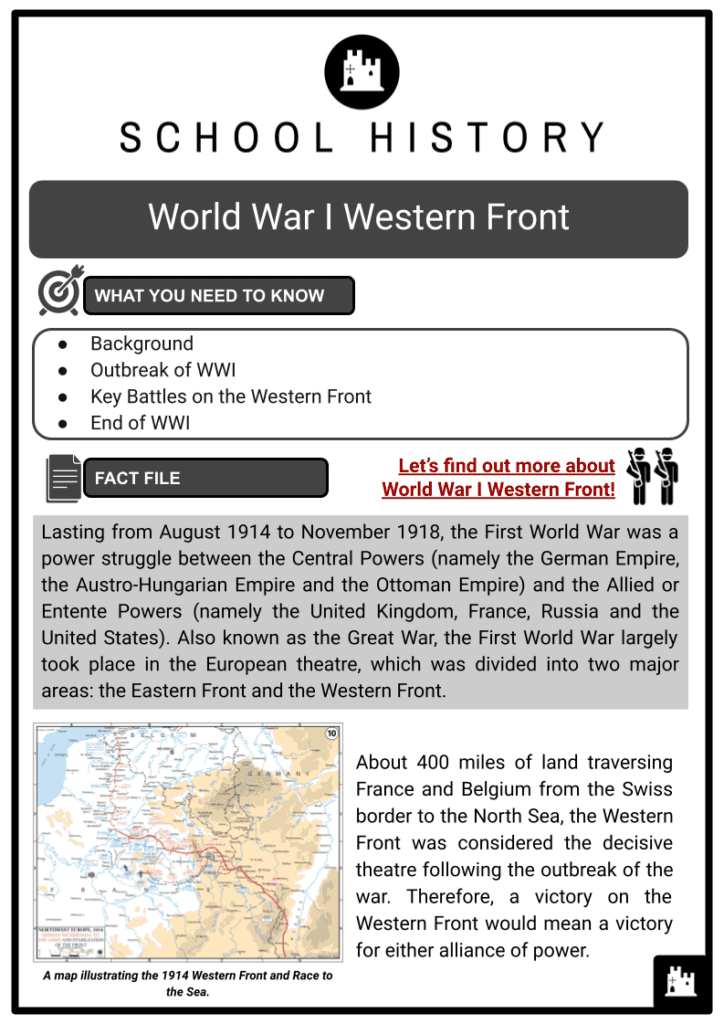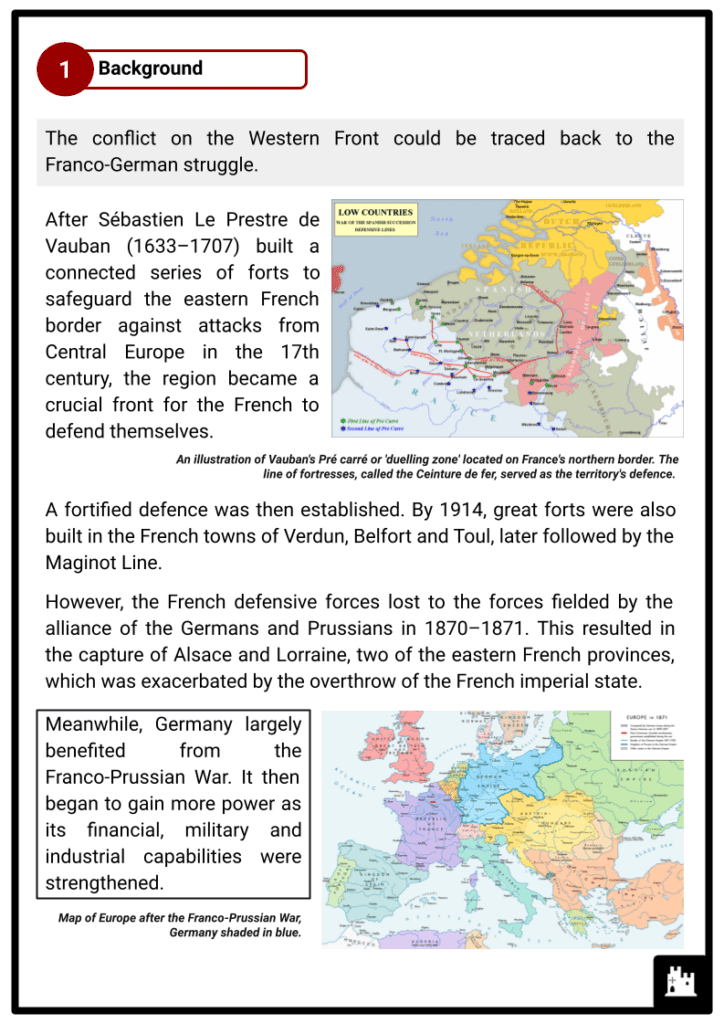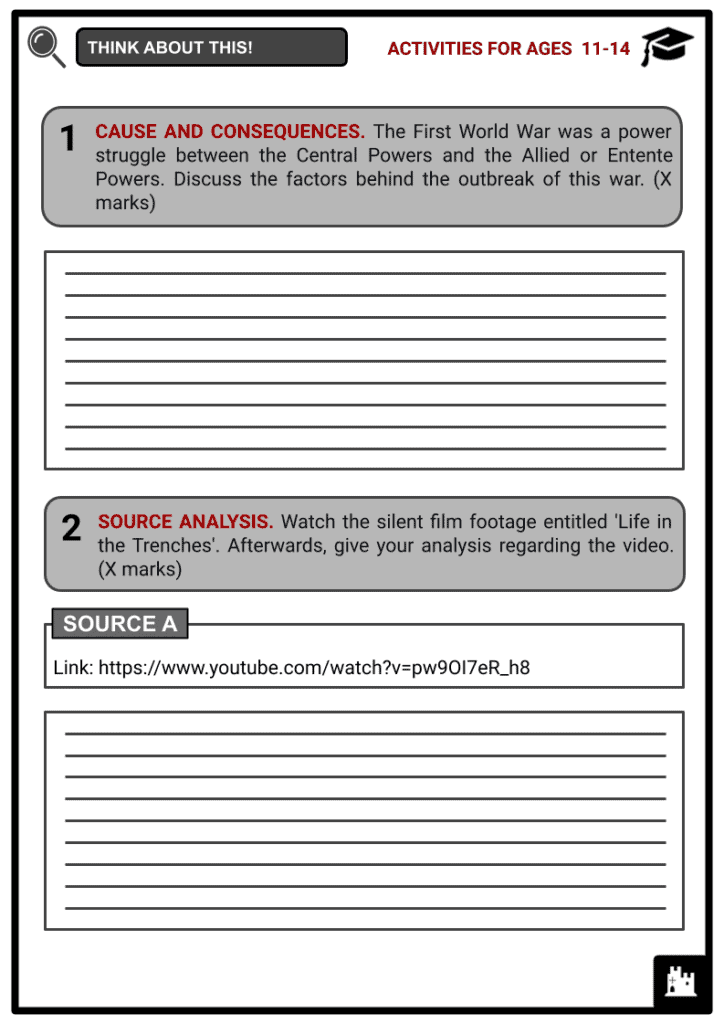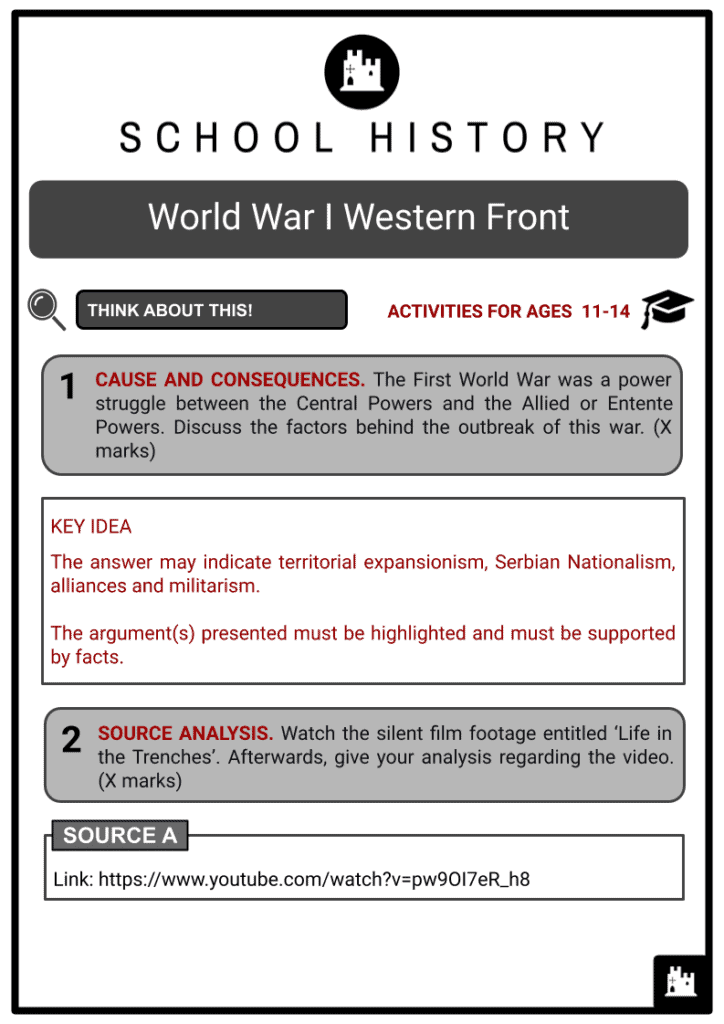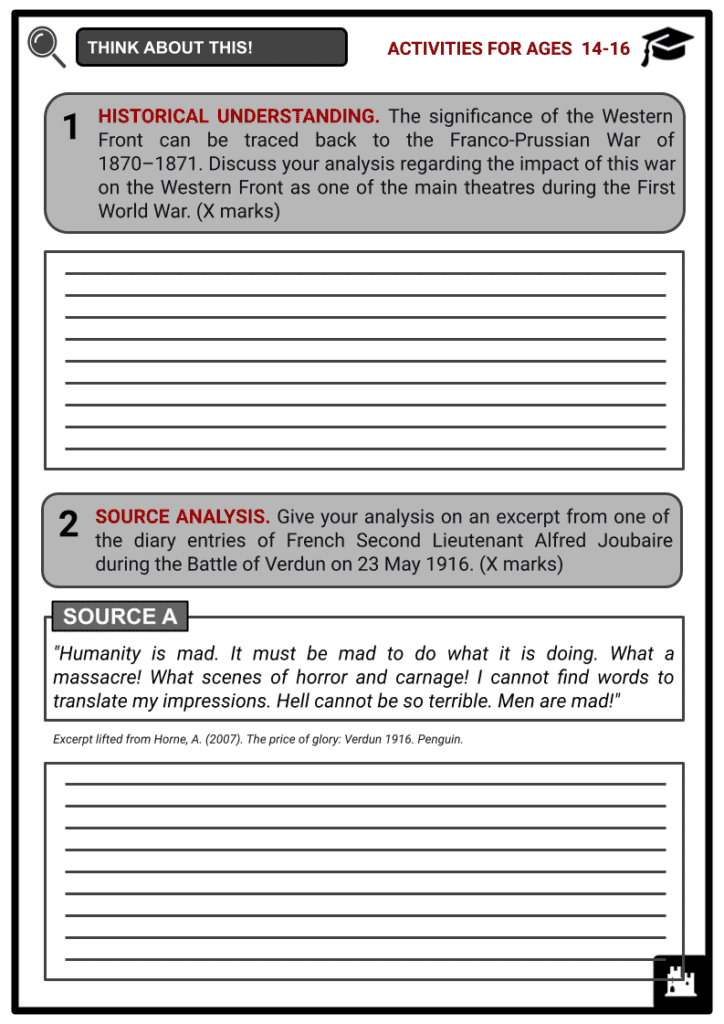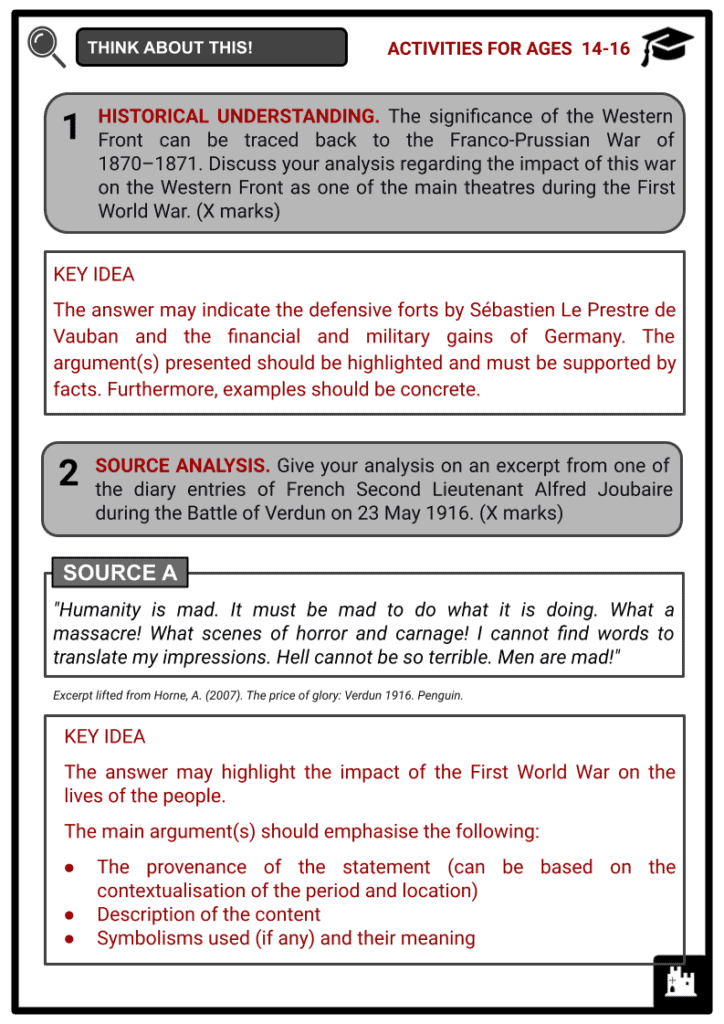World War I Western Front Worksheets
Do you want to save dozens of hours in time? Get your evenings and weekends back? Be able to teach about the World War I Western Front to your students?
Our worksheet bundle includes a fact file and printable worksheets and student activities. Perfect for both the classroom and homeschooling!
Summary
- Background
- Outbreak of WWI
- Key Battles on the Western Front
- End of WWI
Key Facts And Information
Let’s find out more about World War I Western Front!
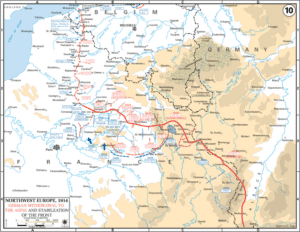
Lasting from August 1914 to November 1918, the First World War was a power struggle between the Central Powers (namely the German Empire, the Austro-Hungarian Empire and the Ottoman Empire) and the Allied or Entente Powers (namely the United Kingdom, France, Russia and the United States). Also known as the Great War, the First World War largely took place in the European theatre, which was divided into two major areas: the Eastern Front and the Western Front. About 400 miles of land traversing France and Belgium from the Swiss border to the North Sea, the Western Front was considered the decisive theatre following the outbreak of the war. Therefore, a victory on the Western Front would mean a victory for either alliance of power.
Background
- The conflict on the Western Front could be traced back to the Franco-German struggle. After Sébastien Le Prestre de Vauban (1633–1707) built a connected series of forts to safeguard the eastern French border against attacks from Central Europe in the 17th century, the region became a crucial front for the French to defend themselves. A fortified defence was then established. By 1914, great forts were also built in the French towns of Verdun, Belfort and Toul, later followed by the Maginot Line.
- However, the French defensive forces lost to the forces fielded by the alliance of the Germans and Prussians in 1870–1871. This resulted in the capture of Alsace and Lorraine, two of the eastern French provinces, which was exacerbated by the overthrow of the French imperial state.
- Meanwhile, Germany largely benefited from the Franco-Prussian War. It then began to gain more power as its financial, military and industrial capabilities were strengthened.
- By 1895, France had reached a defensive agreement with Russia, marking a substantial precedent for the First World War 20 years before it even broke out.
Outbreak of WWI
- In August 1914, as the strategic railways built by Russia and France were nearing completion, Germany quickly reacted by activating the Schlieffen Plan, a tactical solution in which Germany would first invade French territory through the neutral nations of Belgium, Luxembourg and the Netherlands before dealing with the Russian forces. This battle plan was made to avoid a two-front war between France and Russia.
- On 4 August 1914, Great Britain declared war on Germany because the attack breached the 1839 Treaty of London, which saw European powers agreeing to the independence of Belgium. This set the stage for the conflict on the Western Front. Through its forts in Liège and Namur, Belgium did its best to resist the Krupp and Skoda howitzers of Germany, but the Belgian forces were defeated within days. Germany marched forward to occupy Paris and force France to yield.
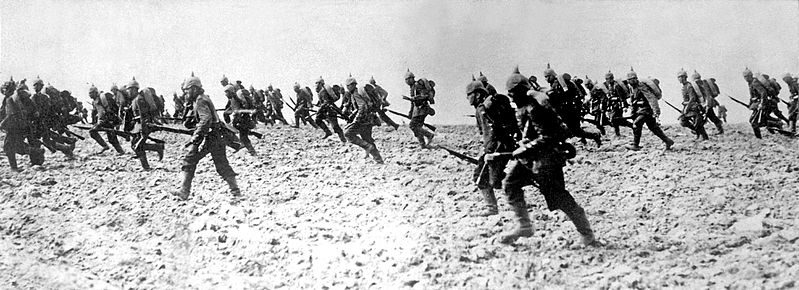
An image of the German infantry on the battlefield, 7 August 1914. - In the south, the French army attempted to recapture Alsace and Lorraine, the two provinces the country lost to Germany following the 1871 Franco-Prussian War. During that year, France tallied more than 300,000 casualties, the second deadliest war the country had ever engaged in.
- Beginning on 5 September 1914, the Entente forces, led by France and Great Britain, held the German advance to Paris after penetrating the gap between Germany’s First and Second Armies at the First Battle of the Marne. In the ensuing weeks, the Entente forces continued to exploit the gap. The Germans were forced to retreat.
- When the Germans contained the French attacks, French military commander Joseph Joffre (1852–1931) led his troops to the far left flank and tried to edge the German forces from the north, but the Germans successfully resisted the attempt. It became known as the Race to the Sea, which left both sides failing to move to the northern flank, leading them to the North Sea.
- Both forces tried to break through the line at the First Battle of Ypres, which lasted from 19 October 1914 to 30 November 1914. Both forces failed. Another attempt, led by the French army, took place from 16–18 December 1914 but rendered no success. These efforts led to a deadly stalemate on the Western Front.
Key Battles on the Western Front
- Over the years, the Western Front was replete with numerous battles. By 16 February 1915, the French forces initiated the first assault at the First Battle of Champagne, resulting in 200,000 deaths for the French and 80,000 for the Germans.
- Despite the casualties, France maintained the offensives all year round until it reached 349,000 deaths, making 1915 the deadliest year for French troops. Great Britain, meanwhile, calculated its move and only launched an independent effort at the Battle of Neuve Chapelle from 10–13 March 1915. But the attempt didn’t work out.
- During that year, Germany was more focused on its advances on the Eastern Front, which proved to be a success. But the German forces instigated the Second Battle of Ypres, which lasted from 22 April to 25 May 1915. However, the effort was made not to attain a sweeping victory but to test poison gas as Germany’s new weapon. When the Germans released the deadly gas during the encounter, it surprised the French and British lines, but the latter managed to recover.
- From 9 May to 18 June 1915, the Second Battle of Artois occurred, which saw an initial success for the French after capturing Notre Dame de Lorette. However, the Germans remained in control of Vimy, which the French also hoped to occupy, until April 1917, when the territory was seized by Canadian troops. Following this, France targeted Woëvre and Les Eparges but gained no victory. They continued launching attacks in Champagne and Artois, while Great Britain led their own in Loos, adopting the German poison gas tactics. Both proved to be failures.
- In 1916, the Battle of Verdun took place. On 21 February of that year, German military leader Erich von Falkenhayn (1861–1922) began the attack, leading to around 300,000 casualties from each side. This almost resulted in the collapse of the French army. Beginning 26 February 1916, French military leader Philippe Pétain ordered a massive attack elsewhere to force the Germans out of the Verdun fort. Then there came the infamous Battle of the Somme.
- The Battle of the Somme, led by the British army, started on 1 July 1916. This became the deadliest battle on the Western Front as it tallied 1.2 million casualties, roughly 600,000 from the German forces and 600,000 from the Entente forces.
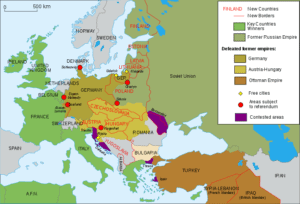
Map illustrating the territorial changes after the First World War.
End of WWI
- The Nivelle Offensive was launched on 16 April 1917 but only lasted for nine days and resulted in 134,000 casualties for the French army.
- The Nivelle Offensive later provoked the so-called French Mutiny. Following this, Great Britain led the Entente forces on the Western Front. The British forces then began a series of battles, including the Battle of Messines from 7–14 June 1917 and the Battle of Cambrai from November to December 1917.
- The attacks remained the following year, but both sides reached an armistice on 11 November 1918, ending all fighting. The German Imperial Monarchy soon declined.
- A peace agreement, known as the Treaty of Versailles, was reached in June 1919. The Entente Powers dictated the terms of the contract.

